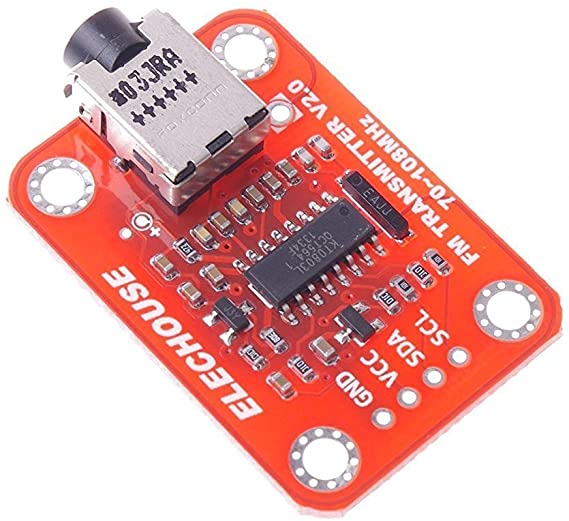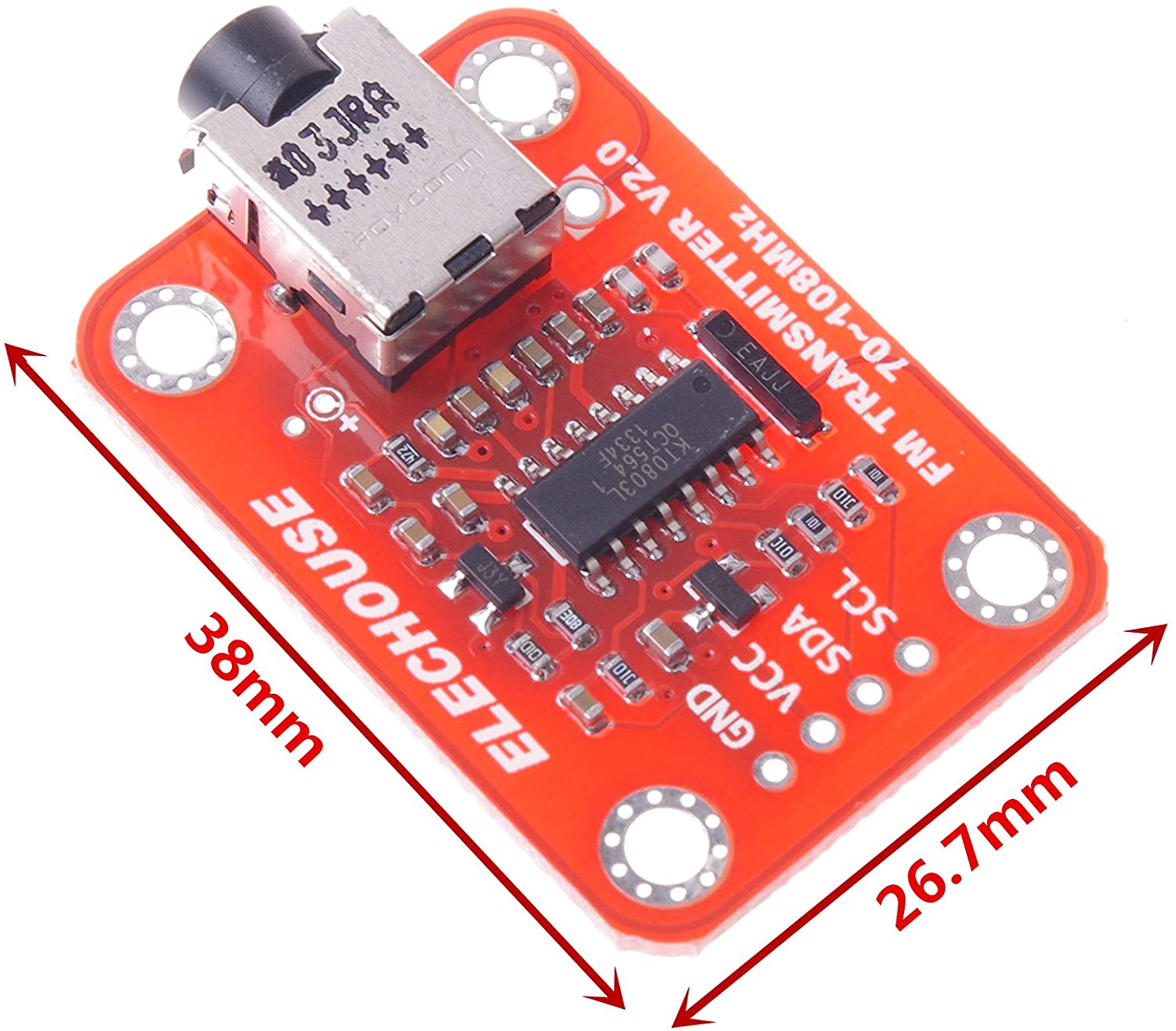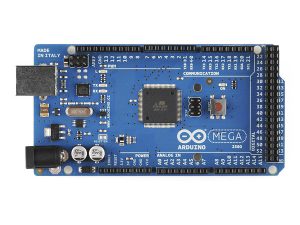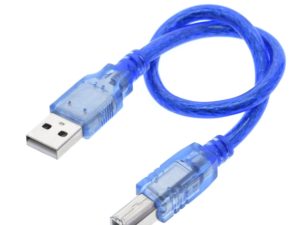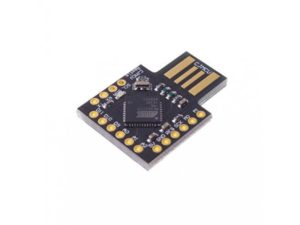Description
Description :
Ever thinking about set up a music radio station yourself? I think it would be great if you could build a music station and share your music with others. Pretty cool, right?
This module could modulate your voice on the FM radio wave(70-108 MHz). And anyone who has a radio device could receive it. We build everything on this module, which makes it very easy to build a tiny radio station. We also reate library for Arduino to work with this module.
Characteristics:
*It is conceived audio interface, and used for microphone or audio wire signal.
*It is tension flea, tension is broad and stability.
*He is practical for group frequent and signal of entrance with five buttons.
*Audio entrance signal regulating of amplitude and microphone regulating of sensitivity.
*Wireless FM audio microphone stereo-transmission FM radio small power.
Specifications:
*I2C interface 5V TTL compatible
*Arduino plug and play
*Onboard MIC
*VCC Input: 3.0V ~ 5.0V
*Antenna port on the board,Any metal line about 75cm can serves as an antenna.
*FM range from 70-108 MHz
Getting started with FM transmitter Module V2.0
In this Tutorial we are going to see how we can transmit our voice or audio music so that someone who have a radio receiver can receive that voice or music, simply we are going to make a simple FM radio station, whereby we are going to interface the FM transmitter Module V2 or V1 with Arduino UNO
Step1: Hardware required
the following are materials needed to finish our task:
- Arduino UNO
- FM transmitter module(V1 or V2 by elechouse)
- Jumper wires
Uploading the sample sketch
#include <FMTX.h>
float fm_freq = 90; // Here set the default FM frequency
void setup(void)
{
Serial.begin(9600);
Serial.print(“FM-TX Demo\r\n”);
/**
Initial, set FM channel and select your area:
USA
EUROPE
JAPAN
AUSTRALIA
CHINA
*/
fmtx_init(fm_freq, USA);
Serial.print(“Channel:”);
Serial.print(fm_freq, 1);
Serial.println(“MHz”);
}
void loop(void)
{
/** check for data setting new frequency. Users could input data from Serial monitor. Data
must start with ‘&’ and followed by 4 numbers, such as &8000. The first two is the integer part
of new frequency (Unit: MHz), and the last one is the decimal part. And the channel must between 70MHz
and 108Mhz. For example, &756 is 75.6MHz, and &666 is out of range.
*/
if(Serial.available()){
switch(Serial.read()){
case ‘&’:
u8 i,buf[4];
float ch;
i=0;
delay(30);
while(Serial.available()&&i<4){
buf[i]=Serial.read();
if (buf[i]<= ‘9’ && buf[i]>= ‘0’) {
i++;}
else{
i=0;
break;
}
}
if (i==4){
ch = (buf[0]-‘0’)100+(buf[1]-‘0’)*10+(buf[2]-‘0’)*1+0.1(buf[3]-‘0’);
if(ch>=70&&ch<=108){
Serial.print(“New Channel:”);
Serial.print(ch, 1);
Serial.println(“MHz”);
fmtx_set_freq(ch);
}else{
Serial.println(“ERROR:Channel must be range from 70Mhz to 108Mhz.”);
}
}else{
Serial.println(“ERROR:Input Format Error.”);
}
while(Serial.available()){
Serial.read();
}
break;
}
}
}

